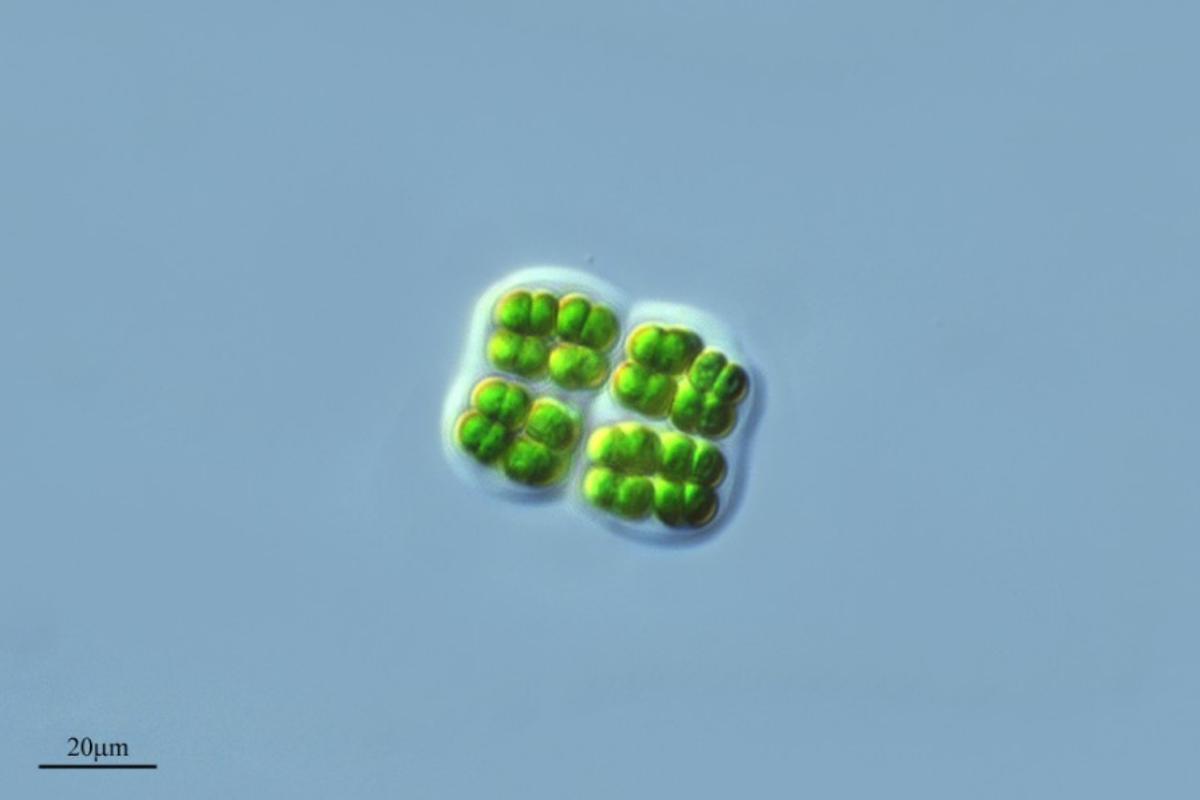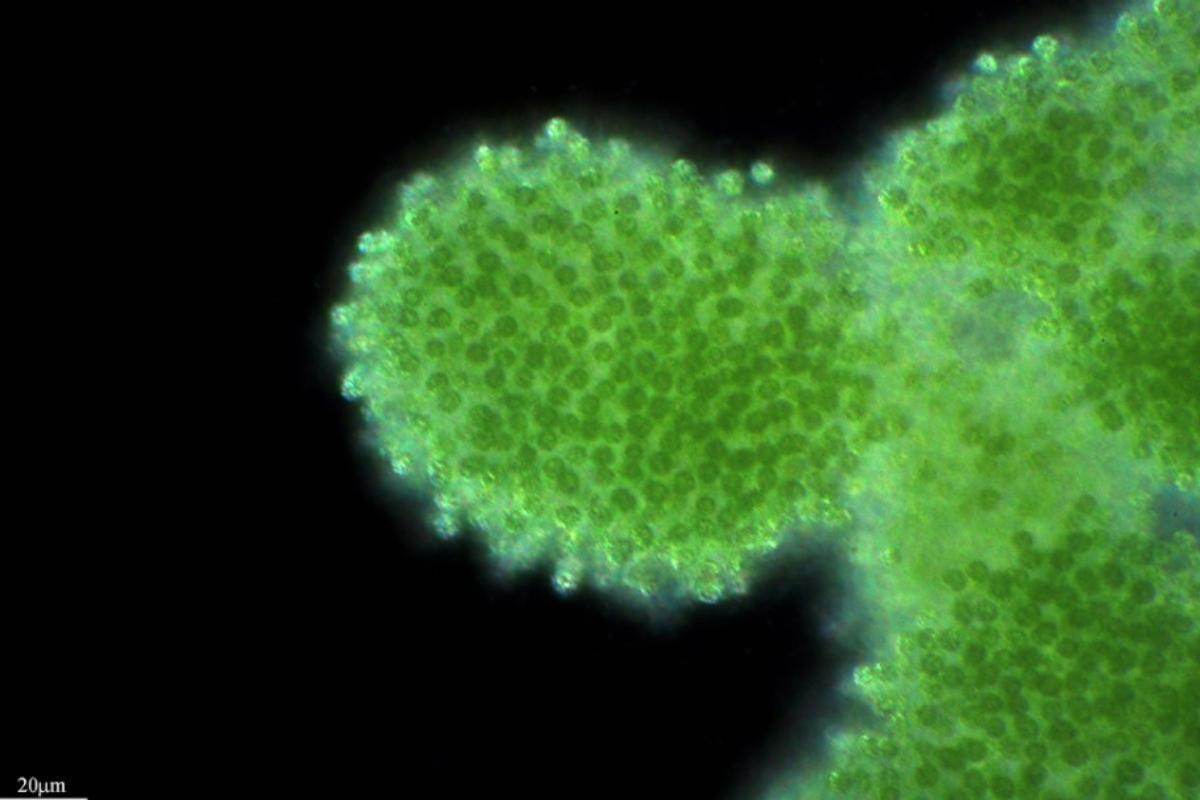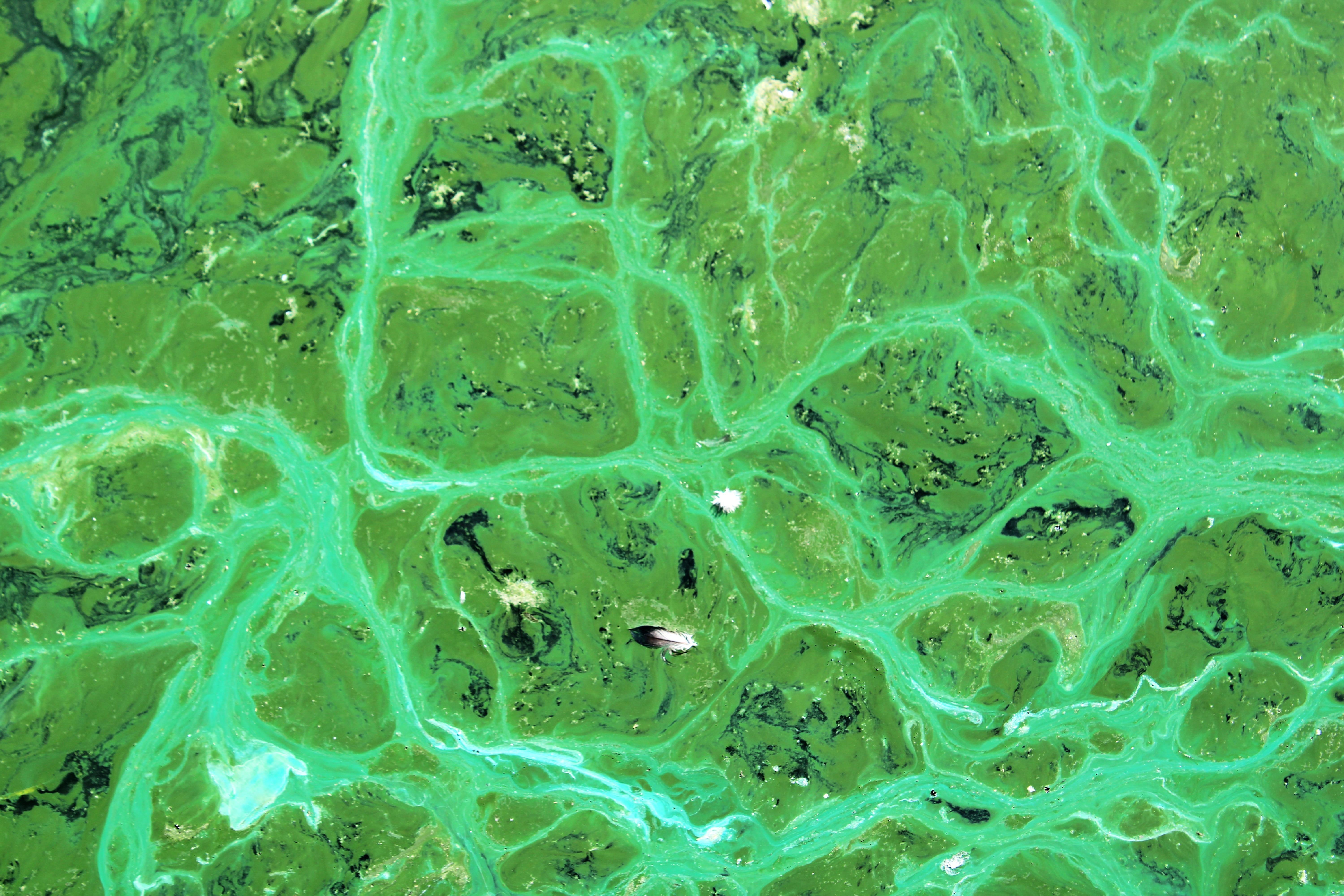What Are Cyanobacteria in Biology? - Definition With Examples

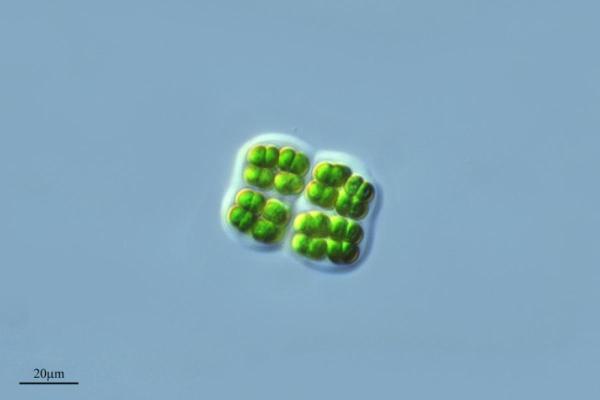
We should be aware that bacteria can be very harmful to individual organisms, depending on their type and rate of infection. We may be less aware of just how important different types of bacteria are for both individual organisms and the larger ecosystems in which they live. They can help in food digestion, growth of vegetation and many more vital functions for life on Earth to continue. Also known by their phylum Cyanophyta, cyanobacteria are one of the most important microorganisms on the planet. They were once considered part of the plant kingdom (Plantae), but are now considered part of the Monera kingdom.
At thedailyECO, we ask what are cyanobacteria in biology? In providing a definition and examples of cyanobacteria, we can discover more about how essential they are for our continued existence.
What are cyanobacteria?
In biology, cyanobacteria are a phylum of unicellular, autotrophic, prokaryotic organisms capable of oxygenic photosynthesis. This means they can convert light energy into chemical energy in the same way as most plants and algae. It is for this reason cyanobacteria are sometimes referred to as oxyphotobacteria, although this use is not common and sometimes considered unhelpful[1].
Cyanobacteria belong to the group known gram-negative bacteria and their name is derived from their bluish color. when used as a prefix, cyano- refers to something that is blue in color. The scientific taxonomic classification of cyanobacteria has changed over time:
- Originally, cyanobacteria were included in the plant kingdom and were called cyanophytes, a term meaning ‘blue plants’.
- Later, they began to be considered algae and to be called cyanophyceans, which means blue algae. Cyanobacteria were believed to be algae due to their photosynthetic ability. They are still commonly known as lue-green algae, despite no longer being considered a type of algae.
- At a later stage, term alga was redefined and reserved exclusively for photosynthetic eukaryotic organisms, cyanobacteria being excluded from this group because they are prokaryotic organisms.
- Currently, cyanobacteria are grouped in the Cyanophyceae class of the Bacteria domain, belonging to the kingdom Monera. The kingdom Monera is not often used as it has been commonly replaced by the two separate domains Bacteria and Archaea.
There is still some controversy over the taxonomic categorization of cyanobacteria in biology. Although the kingdom of cyanobacteria is the kingdom Monera, this term is not used since prokaryotic organisms are not classified into kingdoms. These discussions have been continuing as recently as 2020, with one paper providing the definition of cyanobacteria in biology as the following:
Organisms in the domain bacteria able to carry out oxygenic photosynthesis with water as an electron donor and to reduce carbon dioxide as a source of carbon, or those secondarily evolved from such organisms[1].
Now we know how cyanobacteria fit into taxonomic ranks, we can look more closely at their characteristics and functions.
Characteristics of cyanobacteria
One of the reasons cyanobacteria have gone through so many taxonomic changes is due to our understanding of what they are and how they function changing. This is partly thanks to advances in microscopic capabilities and other forms of technology. Through bacteriological study, we can assert the following are common characteristics of cyanobacteria:
- Oxygenic photosynthesis: a prokaryote or prokaryotic organism is one that is composed of prokaryotic cells, which do not have a defined cell nucleus. Oxygenic photosynthesis is the one in which electrons from water are used to convert light energy into chemical energy and inorganic chemical compounds, such as carbon dioxide, nitrogen or phosphorus, into organic chemical compounds such as oxygen. Cyanobacteria are the only known prokaryotes to have this photsynthetic capacity. Learn more about photosynthesis with our article on the different types of chlorophyll.
- Color: another distinctive feature of cyanobacteria is their conspicuous blue-green color, ranging from a very faint green to a blue so dark it resembles black. This pigmentation is due to phycobilin, a class of chromophore compounds present in the cytoplasm of cyanobacteria. Despite the fact most common colors in cyanobacteria are those derived from bluish-green, there are numerous species that have reddish or copper tones.
- Size: although cyanobacteria are microscopic organisms only a few micrometers in length, they are larger than most other types of bacteria.
- Reproduction: cyanobacteria reproduce asexually by binary fission, multiple fission, budding or fragmentation.
- Respiration: they breathe through aerobic respiration.
- Community: despite the fact they are unicellular organisms, they usually group together and form extensive colonies, some ranging from thousands to millions of individuals grouped in colonial associations.
- Habitat: cyanobacteria inhabit all types of ecosystems, both aquatic ecosystems and terrestrial ecosystems with acceptable levels of humidity. They can be found in ponds, lakes, lagoons, rivers, wetlands, mangroves, oceans, underground water reservoirs, caves, jungles, mountains, forests, the surface of rock formations and even on the skin of some animals.
- Extremophiles: some cyanobacteria are extremophiles, meaning they endure extreme environmental conditions. Some such inhospitable inhospitable environments include deserts, hot springs, hydrothermal vents, glaciers, hypersaline lakes, highly alkaline waters and even in outer space.
- Symbiotic relationships: there are species of cyanobacteria that establish symbiotic relationships with ferns, protists or fungi. The symbiosis between a cyanobacterium and a fungus is commonly known as a lichen. Learn more about what is symbiosis in biology.
Although most cyanobacteria have the aforementioned characteristics, there are certain exceptions. For example, there are species of cyanobacteria that are macroscopic and not microscopic or heterotrophic and not autotrophic.
Now that we have seen what the characteristics of cyanobacteria are, we are going to see their internal structure and organelles.
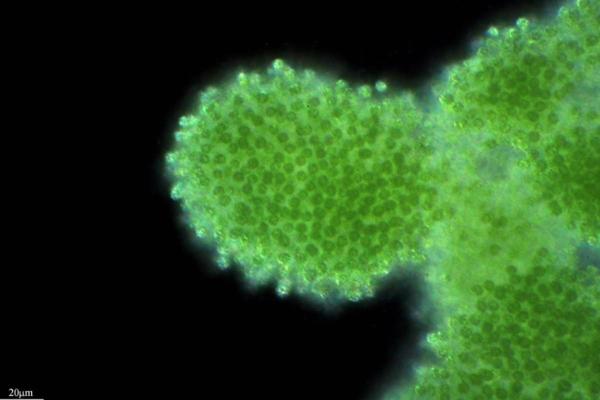
Cyanobacterial organelles
The aforementioned characteristics of cyanobacteria in biology are thanks to their physiological makeup. The constituent parts of their physiology are thanks the the following organelles of cyanobacteria:
- Carboxysomes: responsible for fixing CO2.
- Gas vesicles: allow buoyancy.
- Cyanophycin granules: store the protein cyanophycin and cyanophycean starch.
- Glycogen granules: store energy.
- Protonucleus: represents the region in which the DNA of the cyanobacteria is found, which is characterized by being circular and closed.
- Thylakoid membrane: an invagination of the plasmatic membrane in which the thylakoids are found.
- Ribosomes: allow the synthesis of proteins are 70S.
- Cell membrane: made up of an inner plasma membrane and an outer membrane, both composed of phospholipids and hopanoids.
- Cell wall: located between the inner and outer plasma membranes, it is composed of peptidoglycans and provides mechanical protection to the cell.
- Photosynthetic lamellae: contain photosynthetic pigments such as chlorophyll a, carotenoids and phycobilins which capture light.
Learn more about the structure of cells with our article on the definition and function of organelles.
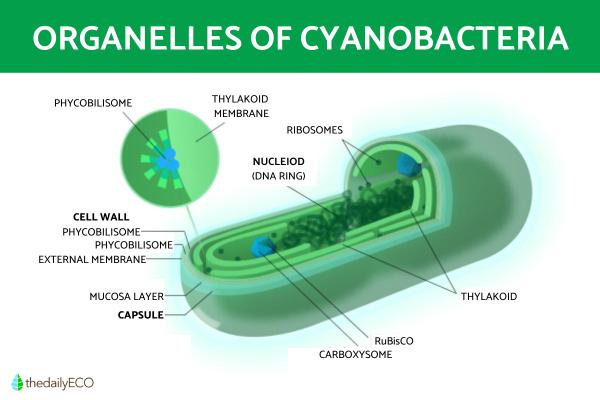
Cyanobacteria groups
The groups formed by these microorganisms are called trimerous colonies (because they grow and branch in three directions). They are made up of highly specialized cells that fulfill specific functions within the colony. Some of the cells that make up the trimer colonies of cyanobacteria are:
- Heterocysts: cells responsible for fixing atmospheric nitrogen.
- Acinetes: the largest cells and serve to store cyanophycean starch.
- Baeocysts: cells responsible for the branching of the colony through multiple fission.
- Nedridia: cells that undergo apoptosis to allow the propagation of the colonies. These cells die and allow segments of the colony (hormogonia) to detach and move until they find a new substrate on which they can attach and form a new colony.
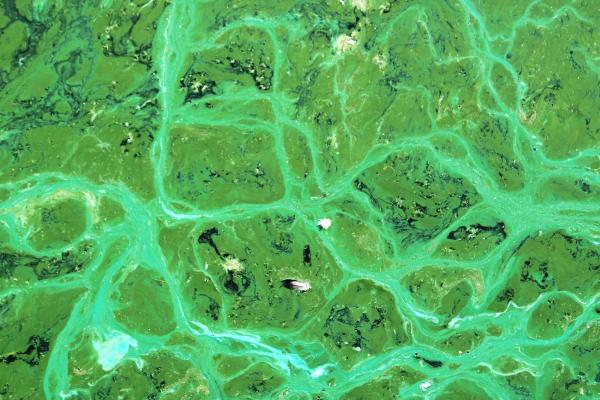
Examples of cyanobacteria
There are more than 5,000 species of cyanobacteria in biology. Some of the most representative species and examples of cyanobacteria are:
- Arthrospira platensis and Arthrospira maxima: belonging to the genus Spirulina, they are two species of cyanobacteria that are of particular commercial interest. They are used in the preparation of spirulina, an energizing dietary supplement with a high content of proteins, minerals, vitamins and carotenes.
- Nostoc sphaericum: a cyanobacterium of the Nostoc genus that is highly appreciated in the gastronomy of several Latin American countries, where it is known as cushuro. It has a spherical shape, gelatinous consistency, and antioxidant and antiviral properties, which is why it is also of pharmacological interest.
- Nostoc commune: an example of cosmopolitan cyanobacteria that usually grow in moist soils, mosses, or grasses found near puddles. In addition, said colonies have a gelatinous consistency, the reason why different types of cyanobacteria of the genus Nostoc are known commonly star jelly, spit of moon or troll's butter, among others.
- Nostoc punctiforme: a filamentous cyanobacterium that forms symbiosis and endosymbiosis with other organisms. It usually creates semi-elliptical colonies in moist but smooth soils.
- Synechococcus: an example of a unicellular cyanobacterium that is widely present in the marine environment. Its main pigment is chlorophyll.
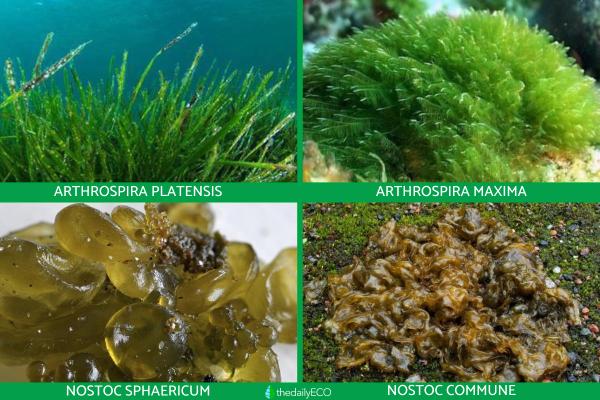
What is the importance of cyanobacteria for life?
We have already mentioned that cyanobacteria are essential for the continuation of life on our planet, but we have not explained why. Here we look at the various aspects of cyanobacteria which make them so important for life as we known it. The main reasons why cyanobacteria are so important are because:
They are primary producers
Cyanobacteria play a fundamental role in the development of various aquatic and terrestrial ecosystems. They are primary producers and act as suppliers and nitrogen fixers for all kinds of food chains. Atmospheric nitrogen is especially important for the growth of algae and aquatic plants, which are themselves important primary producers.
You can take a look at our related article to understand the importance of aquatic ecosystems.
They carry out most of the photosynthetic activity
Since most of Earth's photosynthetic activity occurs in water, algae and cyanobacteria are known to produce much more oxygen than land plants. Cyanobacteria generate a good percentage of Earth's molecular oxygen and also help enormously to reduce carbon dioxide levels in the environment.
They are the first autotrophic organisms
Cyanobacteria were the first autotrophic organisms. In Prehistory, they gradually flooded the Earth's atmosphere with oxygen produced through photosynthesis. This change in the composition of the atmosphere allowed the formation of the ozone layer (which protects us from harmful ultraviolet radiation from the Sun) and the emergence and diversification of new organisms capable of surviving out of water, i.e. aerobic beings.
Autotrophic organisms originated from cyanobacteria. From the endosymbiosis between the plastics of cyanobacteria and primitive eukaryotic cells arise the plant cells and algae that we know today.
They are of economic interest
Several species of cyanobacteria are of economic and biotechnological interest. Some are cultivated for food purposes, for example Arthrospira platensis, Arthrospira maxima and Nostoc sphaericum.
They are indicators of contamination
Many cyanobacteria are indicators of contamination which can become a real problem for their ecosystems. When there is eutrophication (excess nutrients such as phosphorus, nitrogen and sulfur in bodies of water) cyanobacteria increase their population uncontrollably in a process known as an algal bloom. When these blooms are problematic for their ecosystems, they are known as a harmful algal bloom.
These gigantic colonies clump together in thick, slimy layers on the surface of rivers, lakes, and ponds. Although they are known as algal blooms, it is important to remember they are not technically algae. These harm many living beings because they prevent sunlight from reaching the bottom of the water and produce toxins that can be deadly even for human beings.
They also harm human activities such as:
- Fishing
- Transport
- Tourism
- Drinking fountains
This excess of phosphorus, nitrogen and/or sulfur in bodies of water is often due to human activities such as agriculture and raising livestock. This is thanks to the use of fertilizers and pesticides with high contents of these bioelements.
Learn about how these cyanobacteria can bloom with our article on what are red tides?
They are biological indicators
The appearance of cyanobacteria in an aquarium or tank can mean poor maintenance, excess nutrients (sulfates, nitrates, and phosphates), poor lighting, stagnation and/or poor water filtration. When cyanobacteria form lichens, they are used as biological indicators of air and water quality because they only grow in environments with very low or no pollution levels.
Learn how pollution affects various ecosystems with our article on types of environmental degradation.
If you want to read similar articles to What Are Cyanobacteria in Biology? - Definition With Examples, we recommend you visit our Biology category.
1. Garcia-Pichel, F., Zehr, J. P., Bhattacharya, D., & Pakrasi, H. B. (2020). What's in a name? The case of cyanobacteria. Journal of phycology, 56(1), 1–5.
https://doi.org/10.1111/jpy.12934





